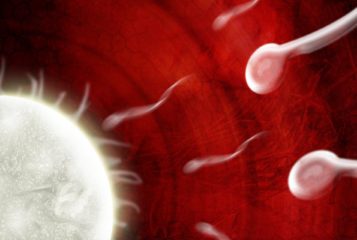The notion persists that sperm donation in Britain limps ahead in a state of perpetual crisis: difficulties at the much vaunted national sperm bank, imports of donor sperm flooding in from Denmark, and UK donors terrified of disclosing their identity. Yet nothing could be further from the truth.
Sperm donors, clearly unfazed by the removal of anonymity a decade ago, are now recognised for their altruistic motivation and adequately compensated for their time and expense. There is no need for a UK fertility patient to source donor sperm from an overseas bank, for despite the perpetuating myths, the UK is now entirely self-sufficient in quality donor sperm from donors readily compliant with the Human Fertilisation and Embryology Authority (HFEA) requirements of traceability.
The myth of crisis only continues to be told based on low and outdated numbers of registered donors recorded by the HFEA (just 586 new registrations in 2013), and long memories in the media of a British Fertility Society report which described the UK's shortage of donor sperm as 'critical'.
The key to reversing this sperm donor 'crisis', as reflected in our experience at the London Sperm Bank, has been the internet and an online business model which we have followed since 2011. Since then, and with the introduction of our online donor catalogue, we have treated more than 3000 infertile women and received enquiries from more than 30,000 men interested in becoming donors.
These 'few good men' are from all walks of life – not only IT and finance (the most frequent donors), but also from the building and fashion trades, as well as the armed forces. More than 80 percent of them initiated their enquiry via a mobile phone or tablet.
As a result, we now have more than 30,000 sperm samples in storage and can meet the matching requirements of all women needing donor sperm throughout the UK.
We are now extending the digital approach even further by introducing in July this year a London Sperm Bank mobile app for patients, which allows them to browse our catalogued donor details, including characteristics, donor self-summaries and extended profiles. Patients can also submit their donor preferences through a wish-list, allowing them to receive an immediate alert when a donor meeting their criteria becomes available. After browsing, patients can choose their ideal donor and order sperm, just as they would in any other online transaction. Their chosen sperm is then delivered to a registered clinic of their choice. Already, a large number of women have registered to receive these alerts following consultations at their chosen clinics.
Ordering sperm from an online catalogue or an app does not trivialise treatment, and every step meets the requirements of the HFEA. Donors remain anonymous, and only the details of ethnicity, character and achievement are recorded. Moreover, each vial of stored sperm processed in a HFEA-licensed laboratory fulfils the minimum WHO semen standards, and most specimens contain more than 20 million progressively motile sperm per ml. Indeed, fewer than four percent of our 30,000 potential donor enquiries have met our selection criteria and go on to become donors. At the London Sperm Bank at any give time we now have more than 100 sperm donors available who meet all screening criteria.
Patients are reassured by such compliance, and especially by the traceability of each UK-based donor (again, in accordance with HFEA regulation). But they also appreciate the immediacy and freedom to choose at their leisure, using a model they are familiar with. So far, the London Sperm Bank has been the first to use this model, but it surely will not be the last. Donor recruitment according to the old model of advertising is unlikely to succeed, but by embracing new technologies we have shown that it can thrive and prosper.





Leave a Reply
You must be logged in to post a comment.